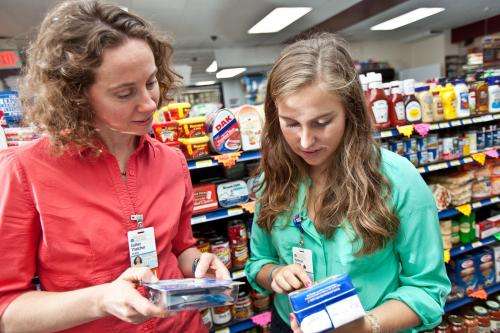What rural Appalachia eats

Very little salad. An overabundance of potatoes. Mountains of rice, white bread and other boxed starches, as well as dried beans, sweet potatoes, cornbread and collard greens.
But how does understanding what lines the grocery store shelves in rural Appalachia impact the way residents and public health nurses combat issues such as diabetes and obesity?
That's the subject of University of Virginia School of Nursing doctoral student Esther Thatcher's dissertation, which aims to assess food access in far Southwestern Virginia (specifically Lee, Wise and Scott counties). Thatcher is mapping what comestibles are available, how expensive they are and what's ultimately consumed – as well as how it's cooked. With diabetes and obesity at epic proportions in rural, impoverished regions in Southwestern Virginia, Thatcher's research aims to help identify the variety of food factors that public health nurses and others can potentially use to combat chronic health problems.
"There's been a rapid shift from a labor force made up of jobs that entail hard, physical labor to jobs that are much more sedentary," she explained, "but meals haven't really changed. Food here is still defined by very strong traditions and remains central to gatherings and cultural identity."
The region where West Virginia, Virginia, Kentucky and Tennessee converge in the Appalachian Mountains is a "hot spot" of obesity and diabetes. Life expectancy in these areas has decreased dramatically the last three decades, and nutrition-related diseases are largely to blame, Thatcher said. A government-commissioned study from the Harvard School of Public Health found that the U.S. counties with the biggest decreases in life expectancy were all in Southwestern Virginia, where the drop in life expectancy was nearly six years for women and about 2½ years for men during the 16-year period studied.
While these counties aren't technically food "deserts" as defined by the USDA (given that most residents live within 10 miles of a food retail outlet), Thatcher said the financial barriers to eating healthfully often mean that households face nutritional deficits even while healthy food lies tantalizingly close.
Just because the area isn't a food "desert" as it's strictly defined doesn't mean something troubling's not going on, Thatcher said.
"It's not enough to install a supermarket in a rural place, and there's no evidence that foods' presence alone will change these chronic conditions," she said.
While half of Thatcher's study mapped food stores and their offerings, the other half involved nine one-on-one interviews, shopping trip "shadowing" and working individually with families to fill out questionnaires about its social composition, income, even the types of kitchen equipment they use. Together, the data and interviews enabled Thatcher to note sociological, economic and nutritional trends that offer a portrait of the gastronomical lives of poor women living in rural Appalachia.
During her research, Thatcher noticed that many families pool resources and augment their pantries and freezers with huge, collective gardens. She noted that women employed thrifty techniques – like buying a large piece of meat and then divvying it into smaller portions to be frozen – but heard repeatedly that fresh produce tended to be out of the financial reach of many.
She also documented that in many rural areas, formal safety nets are thinner than in urban areas, so those informal ties – to family, friends and churches, for example – are critical means of support. Those who were better connected socially had better nutritional access; those less connected had a great deal more stress related to purchasing food, eating and cooking.
Thatcher also observed that over the last several decades, many children have not been taught to cook.
Her advice?
Bring home economics classes back to schools. Create farmer's markets and co-ops to make local food more available to people with fewer social connections. Plant community gardens and make them accessible to single parents by helping with child care and transportation. Offer cooking classes for adults through the cooperative extension services to teach residents about food labels, mealtime-prep and healthy substitutes. Seek ways to give women – still most often the primary meal planners and providers for the region's families the confidence and incentive to introduce things such as brown rice, olive oil, whole wheat bread and pasta at the table. And urge church leaders to offer healthier church suppers.
"There's a lot of discussion about what Appalachia does not have," Thatcher said. "There are a lot of wonderful resources and strengths there, and I'd like to approach interventions for health care from a strength-based perspective, rather than a needs-based one.
"There is an amazing dedication I see to helping one another, despite one's personal circumstances," she added. "That sense of nurturing and wanting to give is a huge asset – and that's something we need to promote in these communities that may have fewer financial resources, but that are rich in latent social capital."
And it often begins, she said, with women, who, despite working at jobs outside the home, often remain the family member in charge of food shopping, meal planning and cooking.
"Women can do a lot of good," Thatcher said.


















